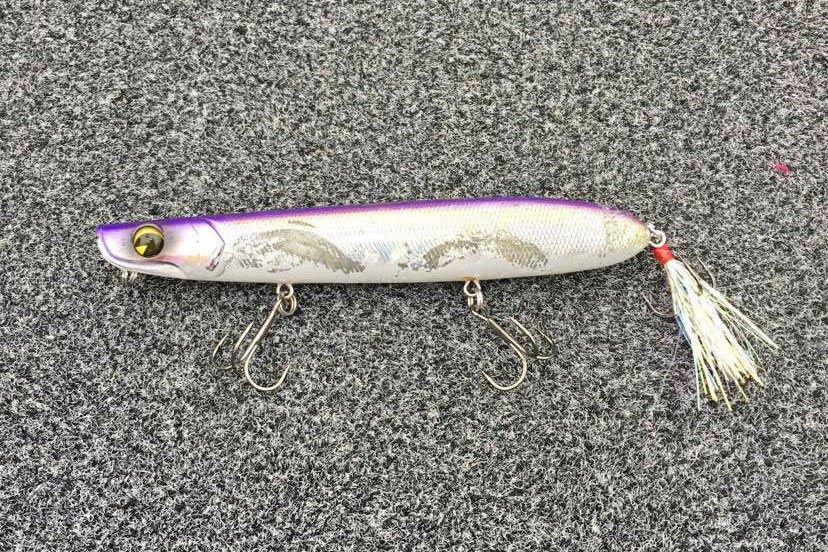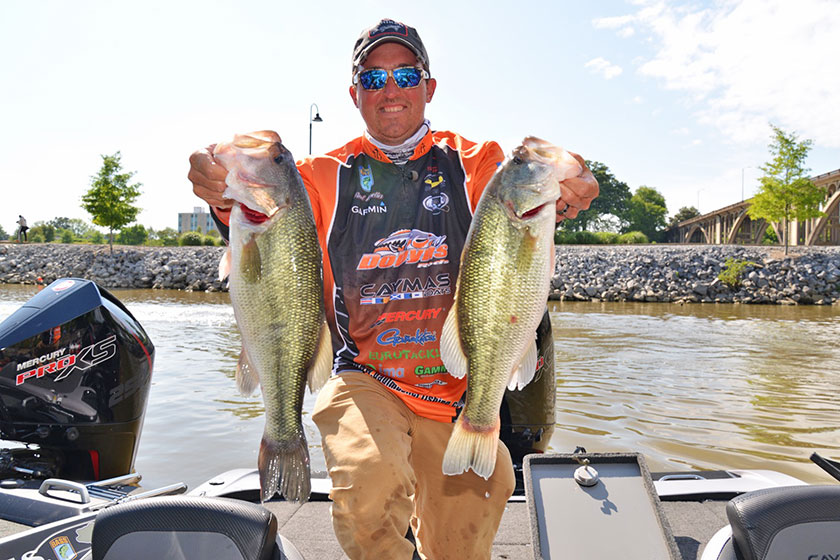May 18, 2021 By Justin Brouillard
A topwater lure could easily be one of the most exciting ways to catch big bass consistently. The anticipation of a bite and a bass breaking the water surface is enough to get even the most seasoned bass angler’s heart racing. Many believe that summer is the only time a topwater is productive but using surface baits in the spring and fall can yield some of the biggest bass of the year.
In this 5-Part Series, Bassmaster Elite Series Pro and talented multi-species angler Paul Mueller takes us through the different types of topwater baits: the when and where that he uses them, why he chooses one over others, and his favorite gear for topwater success.
Walking Baits
With the spawn tapering off towards the end of May in the north and summer getting into full swing, a topwater bite is one of the more productive lures one could throw. Mueller knows that when the forage and baitfish are spawning, there is no better place to be. Big bass are looking for easy meals and there are more fish around that will attack a topwater offering.
“Summer is easily the best time to throw a topwater. There are more fish within the topwater range during the summer than any other time of year, and I keep throwing it until the alewives and bluegills are done spawning.
A walking-style topwater is the first bait on the deck of Mueller’s Caymus boat when the alewives are spawning. Bass are just coming off the spawn themselves and the adult alewives in the 4 to 7 inches in length and that’s what the bass key on. During that time of year, the best bait to cover water is a walking style bait and Mueller can fish it several different ways to provoke big bass.
“The best part about this presentation is I can cover a lot of water, and the lure plows water and walks a full 180 degrees. It moves a lot of water causing substantial surface disturbance. When fish are aggressive, walking-the-dog is hard to beat as it effectively calls fish from deep water and longer distances.
Baits

Ima Little Stik 135
For walking baits, Mueller rotates through three different sizes and makes sure to match the size of his bait to the size of the baitfish. Regardless if the forage are juvenile bluegills, perch, shad or alewives, the Ima Hard Baits are perfect in any scenario.
For a finesse approach, and at lakes where the baitfish may be smaller, Mueller relies on the Ima Skimmer. It is a 4.5-inch slender-body topwater with the slim profile for a more finessey approach. In most cases, the bait that gets the most bites anywhere—and one that Mueller begins fishing with—is the Ima Little Stik 135. At 5.5-inches, the Ima Little Stik is a do-all standard size walking bait with a huge presence on the surface. For a larger presentation or on lakes with larger-than-average bass, Mueller will reach for the Ima Big Stik. At 7-inches, this is a topwater for lakes with giant bass. An easy-walking topwater that causes a lot of commotion.
“The key is to match the size of the bait to the size of the baitfish they are keying in on. The Ima baits are developed in Japan for high-pressure lakes and thrive in ultra-clear water fished extremely fast. You have to keep it moving the whole time so the bass cannot get a good look at it.”
Catching both largemouth and smallmouth bass, the Ima Little Stik 135 is a bait that just plain catches ‘em. On guide trips back in Connecticut, clients often ask why such a big bait?
“It is a good-size bait but both species just absolutely crush it. When I am guiding during that time of the year, it’s a must have to get clients bites and they have a good time with it. It stays in the strike zone so long even when its constantly moving. Mimicking perch and alewives, it turns a full 180 degrees and moves a whole lot of water.”
As for colors, in clear water up north, Mueller likes translucent colors to try and hide the bait from the fish. They can key in on the splashing, but they don’t get a good look at the bait. His favorite color—About Shad—looks exactly like an alewife, which is a key forage in a lot of the lakes in the Northeast. A close second? Ghost Minnow—another translucent bait with some blue and orange on the sides and top—is also worth some time. Don’t overthink the color of the bait but consider the depth, cover, and water clarity.
Gear
Rod:Dobyns Fury 733C
Reel:Lew’s BB1 Pro 8.1:1
Line:17-pound Gamma Poly Flex Copolymer
“When dealing with fish that jump and move fast, you have to keep the slack out of the line when they are hooked. Even largemouth, they often make strong power runs and jump with topwater baits providing ample opportunity to throw the bait. The Dobyns Fury 733C allows me to make long casts while handling different size baits. And, the high-speed Lew’s allows me to fish fast and make another cast quickly. The fast reel can catch up to fish that swim right at the boat. For the large bait. I switch to the bigger Dobyns 795 Fury Swimbait Rod, use the same reel, and up the line to 20-pound Gamma.”



